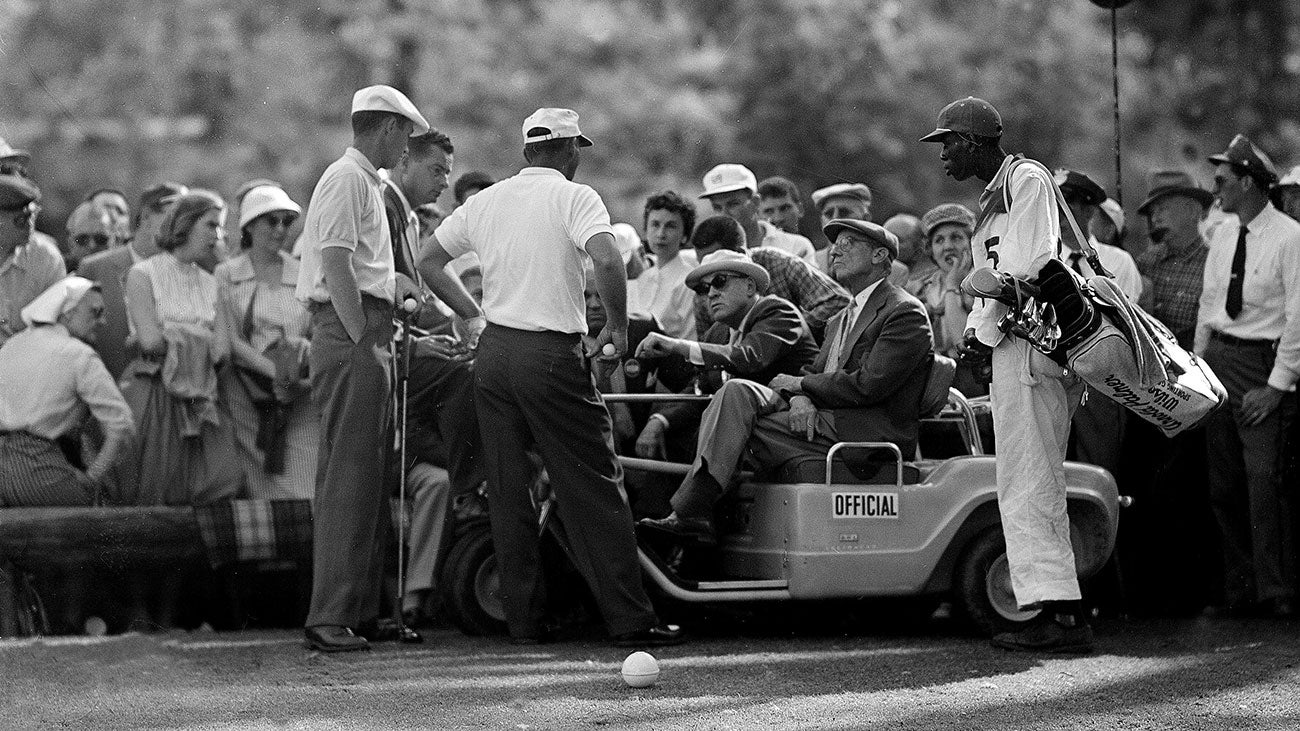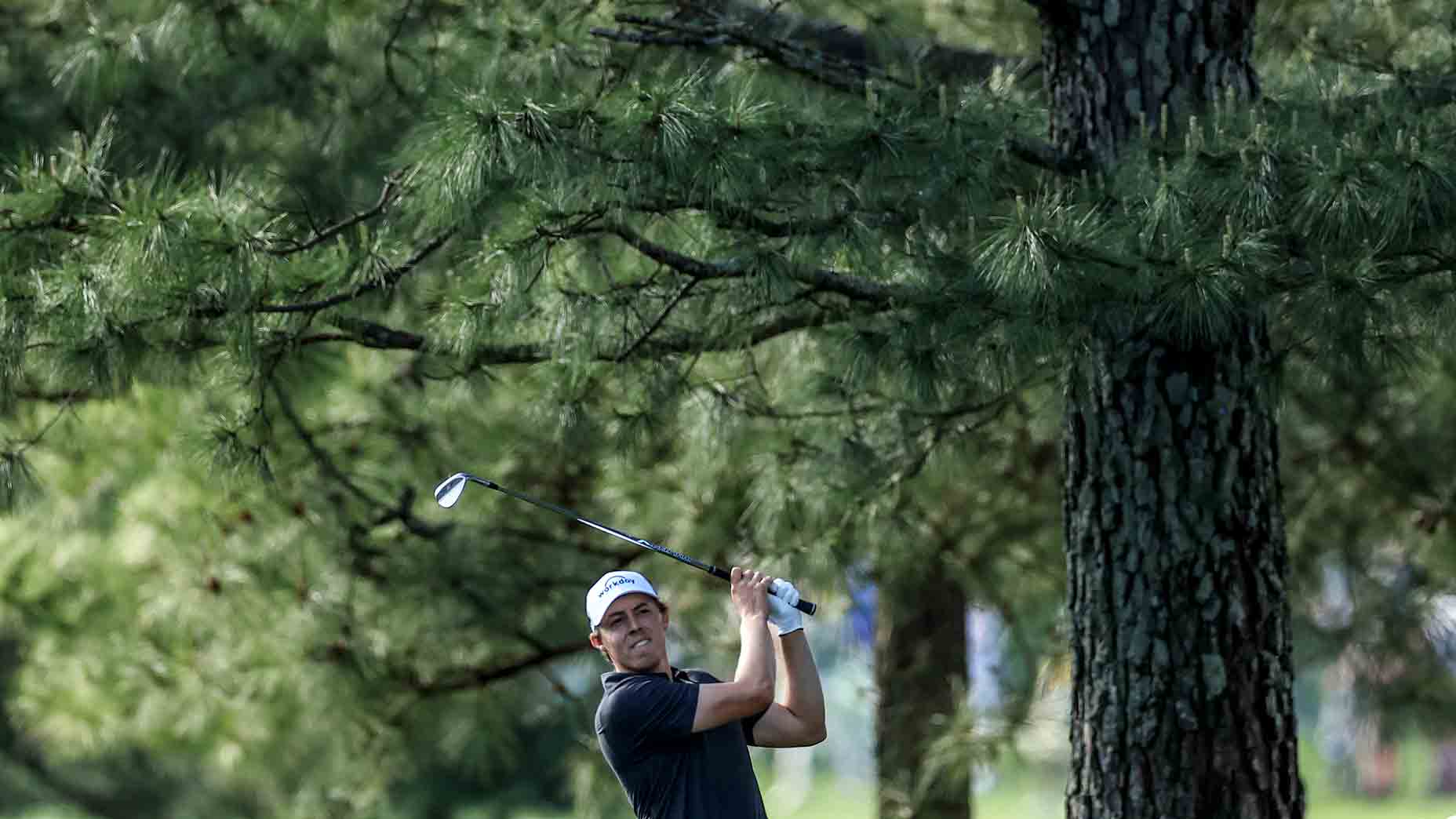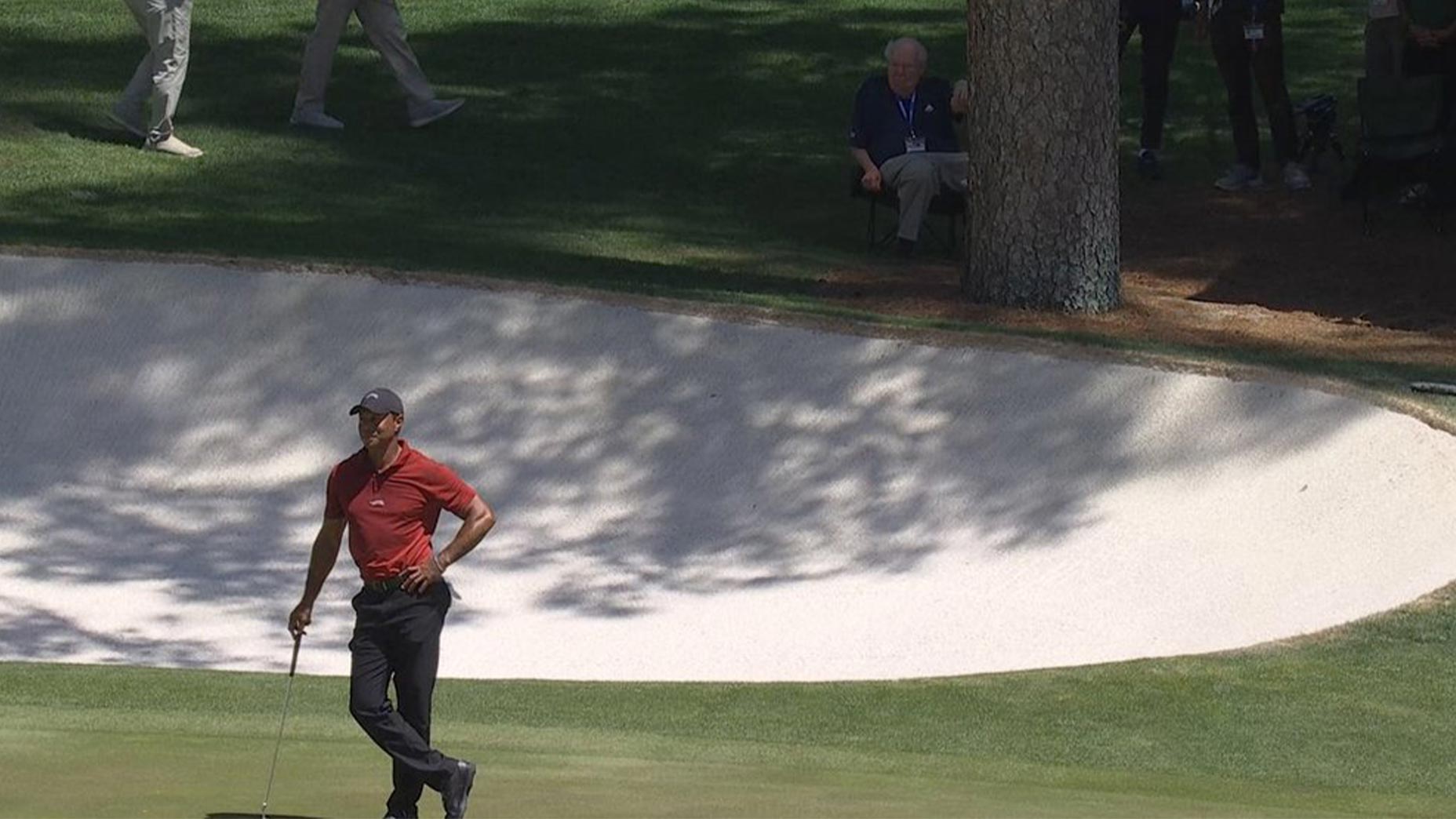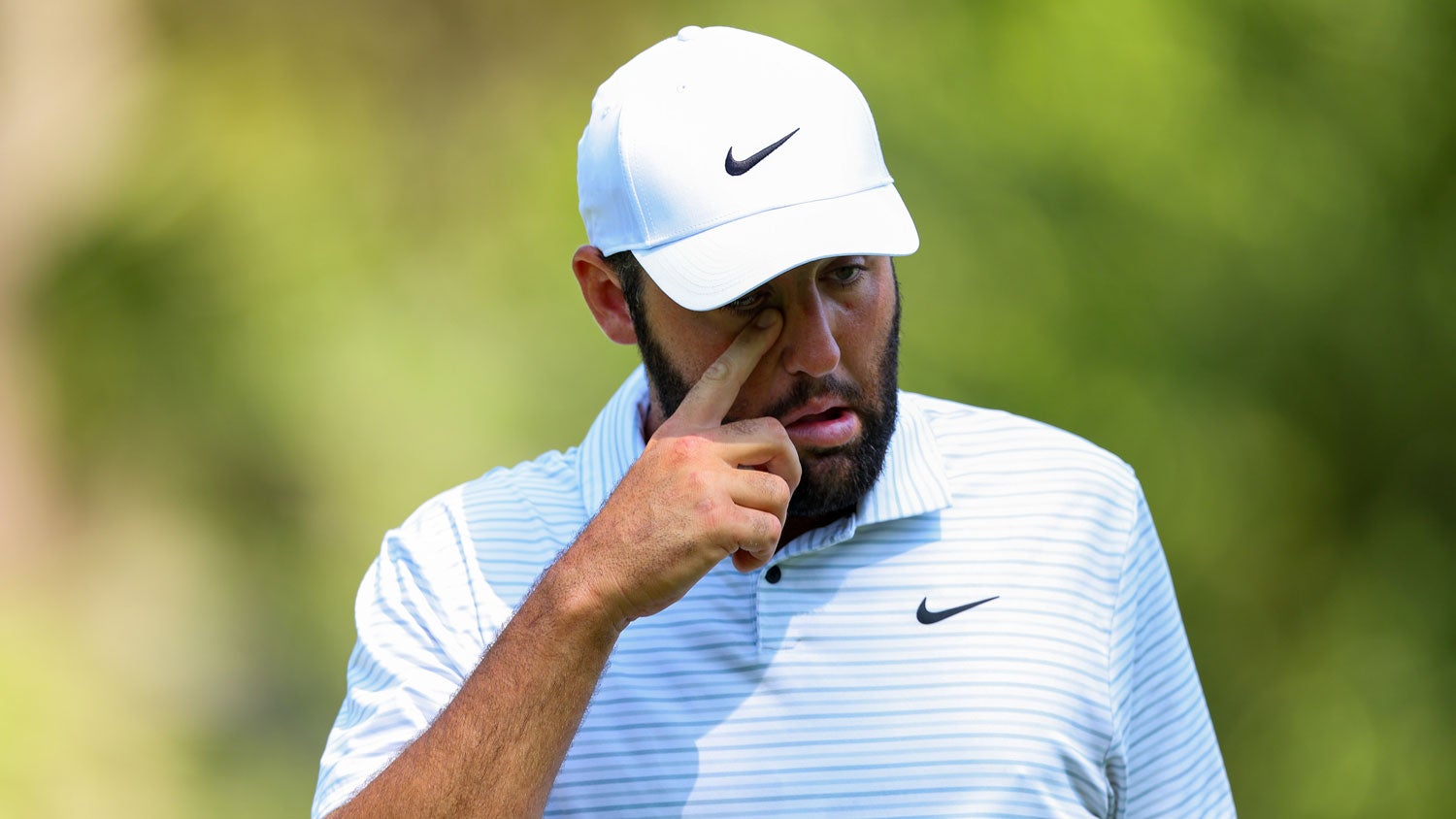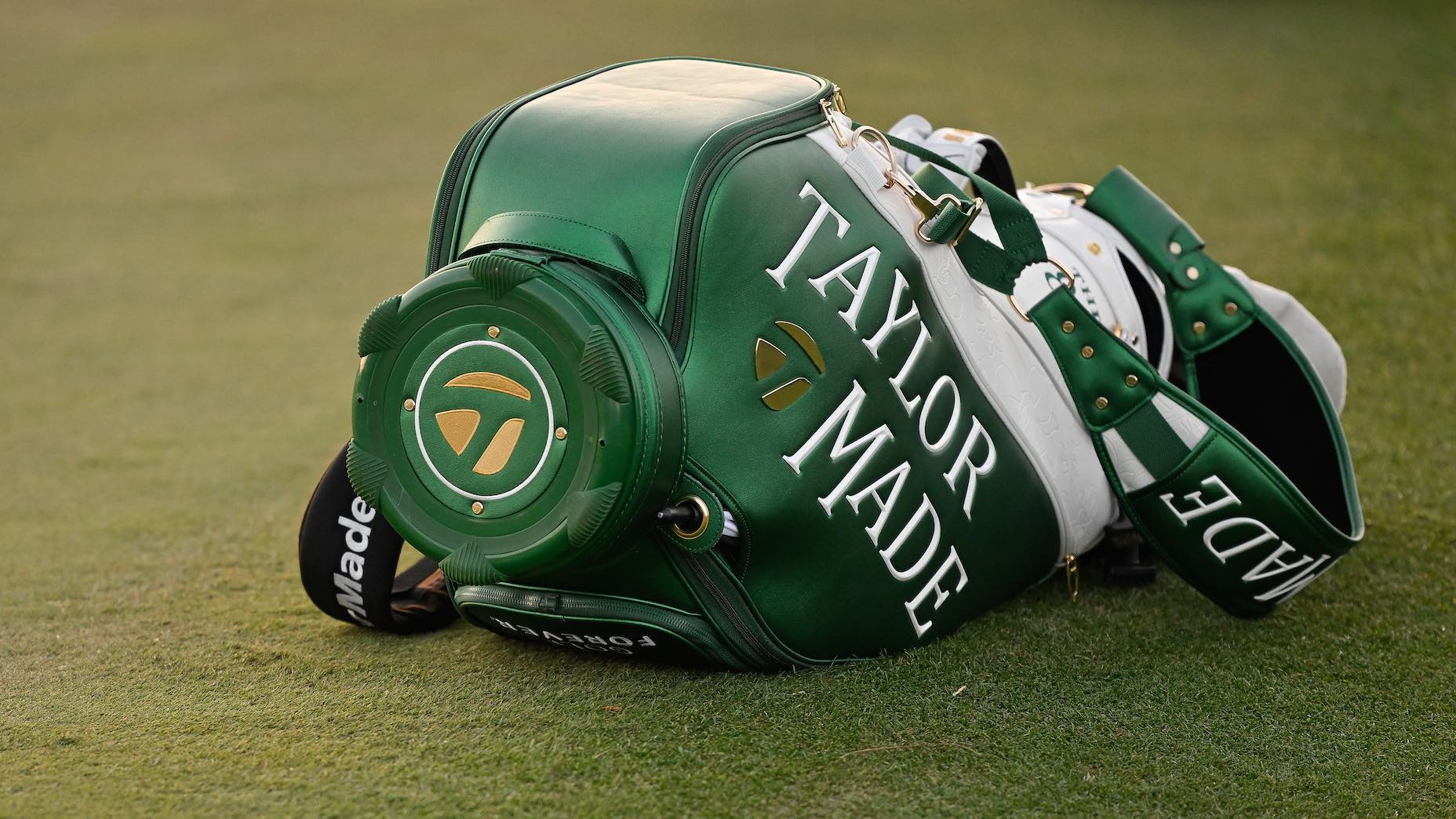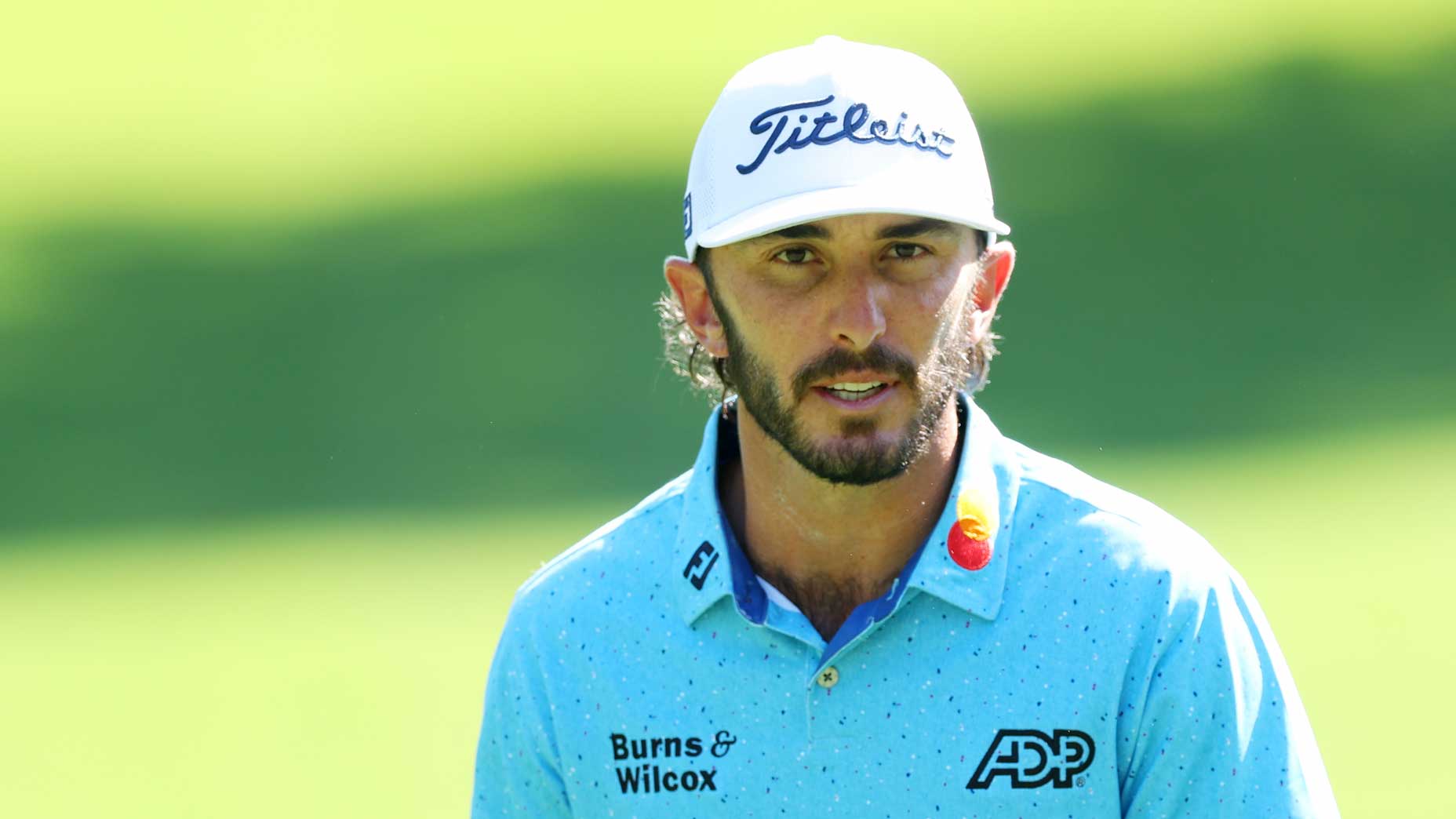7 Masters rules controversies that shook up the tournament
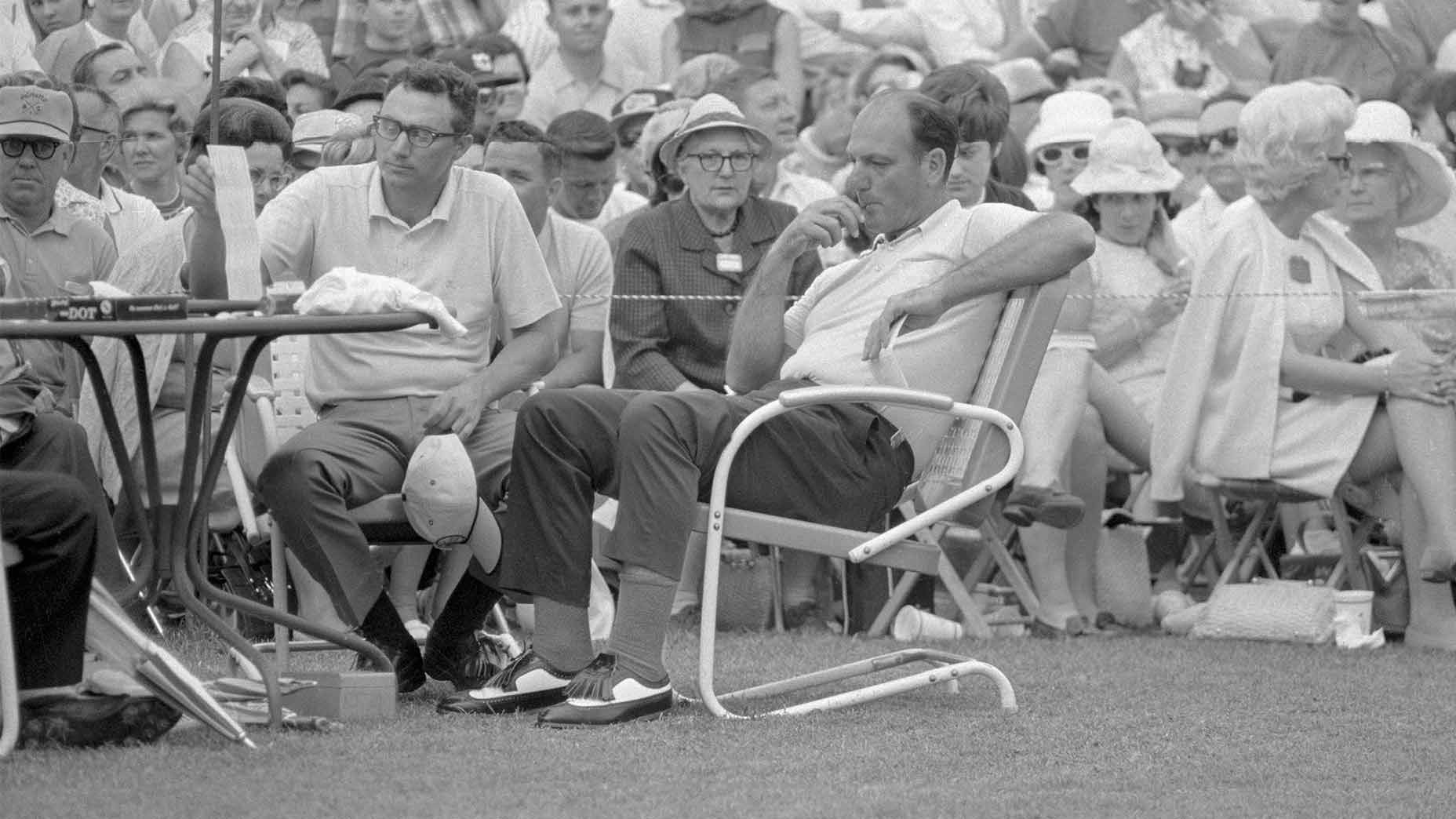
A stunned Roberto De Vicenzo after he signed an incorrect scorecard at the 1968 Masters.
Bettmann/Contributor
Hailed as a tradition unlike any other, the Masters is no different than many tournaments in the sense that it is played by the Rules of Golf. For the most part, that happens without hiccups. But on rare occasions, controversies arise. Here are seven of the most notable rules kerfuffles in the history of the event.
1958: An embedded ball and a controversial call
For Ken Venturi, it was a source of resentment. For Arnold Palmer, a cause for regret. “It” was the disagreement that arose on a sodden Sunday at Augusta after Palmer’s tee shot on the 12th hole thud-landed in a muddy patch behind the green. Palmer thought his ball was embedded. The accompanying rules official thought otherwise. Denied relief, Palmer made double-bogey 5 from his cruddy lie — but then announced he would play a provisional, which he did, getting up and down with that second ball for par.
“We’ll let the rules committee sort it out when we get in,” Palmer told a nonplussed Venturi, who felt that Arnie hadn’t followed protocol. “I agreed with Palmer on the original call,” Venturi said later. “That ball was absolutely embedded. But he didn’t declare he was playing a provisional until after he made the double bogey. To me, that was wrong. Dead wrong.”
The rules committee did indeed sort things out; it sided with Palmer, who wound up winning the first of his four green jackets. Venturi finished two back and never forgot. “We both wrote about (the incident) in subsequent books, each of us insisting we were right,” Palmer wrote in a 2013 Golf Channel column. “I regret that the incident affected our relationship.”
1960: Bad day for the Dow
After finishing the 8th hole in the second round, Dow Finsterwald dropped a ball to practice putting. Not so fast, his playing partner Billy Casper warned him: practice putting was not allowed. “Say what?” said Finsterwald, or something like that. He then confessed that he’d struck some practice putts during the first round. Informed of the transgression, the rules committee huddled and issued a verdict.
Finsterwald would have a two-stroke penalty added to his first-round tally, bumping his score from 69 to 71. You can probably guess what happened next. The tournament continued, and when all was said and done on Sunday, Finsterwald found himself in third place, two shots off the pace set by the the winner, Arnold Palmer.
1968: An accounting error unlike any other
No matter how you do the math, Roberto De Vicenzo took the same number of shots (277, 11 under par) over four rounds as Bob Goalby. But no matter how many times you tell the story, it ends in the same agonizing way: with De Vicenzo signing an incorrect scorecard, an error that kept him out of a playoff and sent Goalby off with the win.
2003: A bad bounce in the bunker
This one wasn’t controversial in the moment, but it makes good what-if fodder in retrospect. Leading by two shots heading into Sunday, Jeff Maggert found trouble on the 3rd hole when his approach shot from the fairway bunker came out low and caught the sandy face. That was bad. Worse was that ball caromed straight back and glanced off Maggert’s chest.
If that same mishap occurred today, there would be no harm, no foul, thanks to a 2019 revision of the rules that eliminated the penalty for a player deflecting his or her own shot. At the time, though, it was insult plus injury, with two strokes added to the indignity. Maggert wound up making triple-bogey 7 on the hole and finished the day in a tie for fifth behind the winner, Mike Weir.
2004: Big Easy, hard decision
The third time proved a charm for Ernie Els in his quest for relief during the second round after he pulled-hooked his drive on the 11th hole. The woods were lovely, dark and deep, but Els was displeased to discover that his ball had settled in a tangle of fallen tree branches, which he argued had been piled up intentionally for the purpose of removal.
“I just felt that they could have moved this stuff off-site,” Els explained later. “In South Africa, we call it ‘greenskeeper’s rubble,’ and I felt pretty strongly about that.”
Others felt strongly otherwise, including the first two rules officials Els consulted; both denied him a free drop from the branches. The next opinion was the one that mattered, though. It came from Will Nicholson, Masters competition committee chair, who granted Els relief. The Big Easy went on to a hard-fought bogey, but still finished one shot behind Phil Mickelson in the tournament, after Lefty birdied the final hole.
2013: Two firsts for Tianlang Guan
By the end of the second round of the 2013 Masters, 14-year-old Tianlang Guan of China had set two Masters marks: youngest player ever to make the cut; and only player ever known to be assessed a slow-play penalty in the event. First warned about his pace on the 13th hole on Friday, Guan was told that he’d been docked a shot as he neared the 17th green. Some critics cried foul over the ruling, saying that Guan had been unfairly singled out on a blustery day when no one in the field was setting land-speed records.

But there was also little doubt that the teen phenom had dawdled on multiple occasions, taking longer than the allotted 40 seconds to hit a shot; on the 16th tee alone, he spent more than five minutes settling on a club. Despite the one-stroke penalty, Guan still made the weekend. What’s more, he proved to be a quick study. “I think it’s still a great week for me,” he said. “I learned a lot.”
2013: The drop heard ’round the world
It was a beautiful wedge, a terrible break and, as it turned out, a costly drop. After laying up on the par-5 13th hole on Friday, Tiger Woods rattled a wedge off the flagstick that ricocheted into the drink. Playing his fifth shot from the fairway, Woods got up and down for bogey. Or so he thought. One viewer phone call and a video investigation later, and Woods was assessed a two-stroke penalty for an illegal drop, which, as he himself acknowledged, he’d taken two feet behind the spot from which he’d originally played. If Woods felt that the fates were frowning on him, at least he had the good fortune of playing the weekend after the tournament committee opted not to DQ him for the breach.

